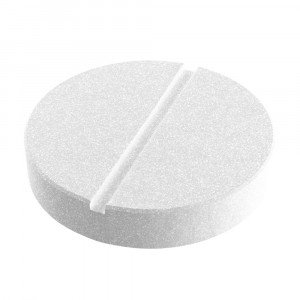 Welcome
Welcome
“May all be happy, may all be healed, may all be at peace and may no one ever suffer."
- A
- B
- C
- D
- E
- F
- G
- H
- I
- J
- K
- L
- M
- N
- O
- P
- Q
- R
- S
- T
- U
- V
- W
- X
- Y
- Z
Lapatinib - Brands
Lapatinib is a 4-anilinoquinazoline kinase inhibitor of the intracellular tyrosine kinase domains of both Epidermal Growth Factor Receptor (EGFR [ErbB1]) and of Human Epidermal Receptor Type 2 (HER2 [ErbB2]) receptors (estimated Kiapp values of 3nM and 13nM, respectively) with a dissociation half-life of greater than or equal to 300 minutes. Lapatinib inhibits ErbB-driven tumor cell growth in vitro and in various animal models. An additive effect was demonstrated in an in vitro study when Lapatinib and 5-FU (the active metabolite of Capecitabine) were used in combination in the 4 tumor cell lines tested. The growth inhibitory effects of Lapatinib were evaluated in Trastuzumab-conditioned cell lines. Lapatinib retained significant activity against breast cancer cell lines selected for long-term growth in Trastuzumab-containing medium in vitro. These in vitro findings suggest non-cross-resistance between these two agents. Hormone receptor-positive breast cancer cells (with ER [Estrogen Receptor] and/or PgR [Progesterone Receptor]) that coexpress the HER2 tend to be resistant to established endocrine therapies. Similarly, hormone receptor-positive breast cancer cells that initially lack EGFR or HER2 upregulate these receptor proteins as the tumor becomes resistant to endocrine therapy.
Absorption: Absorption following oral administration of Lapatinib is incomplete and variable. Serum concentrations appear after a median lag time of 0.25 hours (range 0 to 1.5 hours). Peak plasma concentrations (Cmax) of Lapatinib are achieved approximately 4 hours after administration. Daily dosing of Lapatinib results in achievement of steady state within 6 to 7 days, indicating an effective half-life of 24 hours. At the dose of 1,250 mg daily, steady-state geometric mean [95% confidence interval (CI)] values of Cmax were 2.43 mcg/mL (1.57 to 3.77 mcg/mL) and AUC were 36.2 mcg.h/mL (23.4 to 56 mcg.h/mL). Divided daily doses of Lapatinib resulted in approximately 2-fold higher exposure at steady state (steady-state AUC) compared to the same total dose administered once daily. Systemic exposure to Lapatinib is increased when administered with food. Lapatinib AUC values were approximately 3- and 4-fold higher (Cmax approximately 2.5- and 3-fold higher) when administered with a lowfat (5% fat-500 calories) or with a high-fat (50% fat-1,000 calories) meal, respectively.
Distribution: Lapatinib is highly bound (greater than 99%) to albumin and alpha-1 acid glycoprotein. In vitro studies indicate that Lapatinib is a substrate for the transporters breast cancer-resistance protein (BCRP, ABCG2) and P-glycoprotein (P-gp, ABCB1). Lapatinib has also been shown to inhibit P-gp, BCRP, and the hepatic uptake transporter OATP 1B1, in vitro at clinically relevant concentrations.
Metabolism: Lapatinib undergoes extensive metabolism, primarily by CYP3A4 and CYP3A5, with minor contributions from CYP2C19 and CYP2C8 to a variety of oxidated metabolites, none of which accounts for more than 14% of the dose recovered in the feces or 10% of Lapatinib concentration in plasma.
Elimination: At clinical doses, the terminal phase half-life following a single dose was 14.2 hours; accumulation with repeated dosing indicates an effective half-life of 24 hours. Elimination of Lapatinib is predominantly through metabolism by CYP3A4/5 with negligible (less than 2%) renal excretion. Recovery of parent Lapatinib in feces accounts for a median of 27% (range 3% to 67%) of an oral dose.
To be happy, beautiful, healthy, wealthy, hale and long-lived stay with DM3S.
